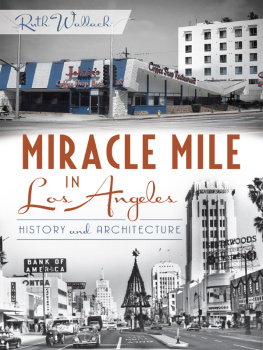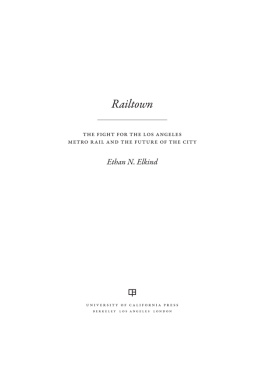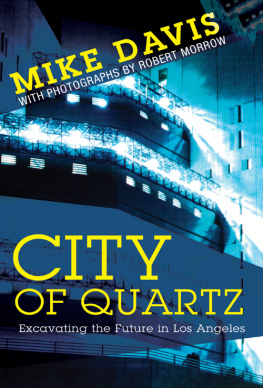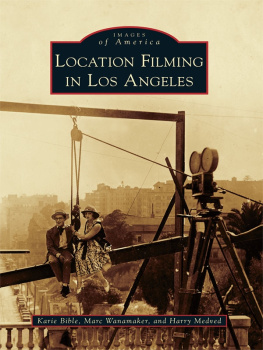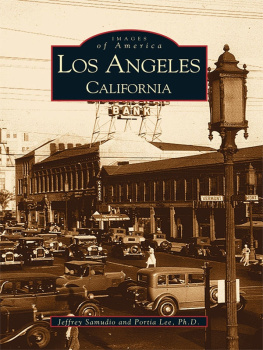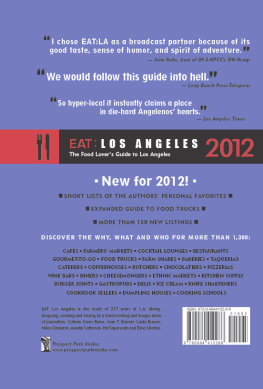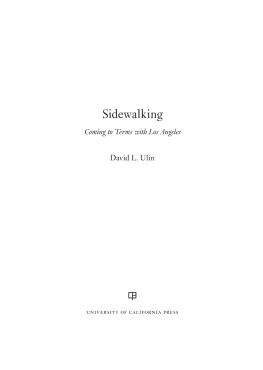PREFACE AND ACKNOWLEDGMENTS
This history of narrative fiction about Los Angeles from the 1880s to the 1990s grows out of a long interest I have had in California, particularly Los Angeles, fiction, an interest that began some years ago when I taught a seminar on Nathanael West and F. Scott Fitzgerald that focused on their years in Hollywood. That experience led to several critical essays and reviews and the editing of three collections of essays on West Coast writing. Even before this interest emerged, I published a book (an expanded version of my dissertation) on fiction about European immigrants in the American city just before and after the turn of the century. What I came to discover was that the two subjects have considerable overlap. Not only do both deal with the subject of the city in literature, but with the notion of border crossings, geographic and cultural passages, representations of the process of entering one place and leaving another. Although the earlier book dealt chiefly with people who left Old World farms, slums, and shtetls for New World slums and ghettos and the present book deals with an essentially middle-class migration across a continent, by Pullman and not steerage, the migratory experiences have considerable parallels. The parallels have been even more noticeable in the past few decades, as immigrationfrom Latin America and Asia as well as from every other region of the globehas all but replaced domestic migration as the chief source of population growth in Los Angeles. This shift is reflected in the strong presence of a vital multicultural, multiethnic fiction in Los Angeles today.
From its beginnings Los Angeles fiction has been a migrant fiction, constructed essentiallyand until the past few decades almostexclusivelyby men and women who left homes elsewhere, drawn to Los Angeles and Hollywood largely to work as screenwriters. Like immigrant fiction, Los Angeles fiction is double-edged: implicitly, at least, it is about both the place discovered and the place left behind, what is gained and lost in the process of extirpation and resettlement. In the migrant writers imagination the past is an elsewhere that is never fully erased from memory. The dialectical interplay between past and present, then and now, East and West, is a recurring and significant feature in the fiction. Paradoxically, in the city located at the farthest edge of the continent and dedicated to new beginnings and liberation from the past (which lies in the East), historythe claim of the pastis never far away in consciousness, never escapable. This is a theme I return to again and again.
I approach the fiction in the contexts of both urban and regional literature. Both categories present problemsproblems, though, that help to define the local tradition and distinguish it from literature produced elsewhere. First, in its low-density horizontal spread across a vast basin the city simply did not look like a city to the arriving writersnot like New York, Chicago, or San Francisco. It was a city that appeared to have no center and hence no periphery. It rambled on and on across a landscape that spread from mountain to ocean. Its pastiche of architectural styles, moreover, simulacra of every manner in architectural history, gave it the appearance of what the historian Carey McWilliams called a giant improvisation. It seemed to the newly arrived writers like an unreal cityand was represented as such in their fictiona fragile and temporary place that could be torn down at any moment if it didnt collapse first in an earthquake. Writers from James M. Cain and Nathanael West to Norman Mailer and Alison Lurie invoked the image of the movie studio itself: the city as giant annex to the back lot, a jumble of sets and props.
If placing Los Angeles fiction in an urban paradigm presents one kind of problem, though, situating it in a regional context offers another. As migrant fiction it undercuts the conventional wisdom of literary regionalism: that it is the product of writers intimately bound to the places about which they write, who have an abiding relationship with the land. In Los Angeles no such abiding relationship existednot, that is, until very recent times when at least some of the fiction has been the work of native-born Angelenos who express a real connectionwith the place. In general, though, it is the migrant writers sense of removal, of dis-placement, that gives the Los Angeles novel its distinctive and distinguishing qualities, qualities that persist in the fiction to the present day. Viewing the literature from both urban and regional perspectivessetting it against the conventions of both perspectives, that isoffers a useful opening to the literature.
My approach is to place the fiction in the contexts of Los Angeless social and cultural history. I look at the writers who came, when and why they came, what they found, and how they responded to the city in their fiction. I am interested both in the way the placein all its apparent oddityshaped the writers imaginations and how their imaginative renderings shaped the city, structured it in image and myth as the city of dream, desire, and deception.
Surprisingly, given the fact that Los Angeles has emerged as a major twentieth-century literary center, arguably the late twentieth-century American literary city, scant critical attention has been given to the extensive body of fiction produced in and about it. Franklin Walkers A Literary History of Southern California, the only full-length study, is now a half-century old and covers essentially the nineteenth century, barely getting into the twentieth. Walker leaves off with a few pages on the 1920s and 1930sthe very decades when Los Angeles fiction had its real beginnings. Since Walker there have been a number of studies, books and essays, focusing on specific authors or particular modes of Los Angeles writing, like the Hollywood novel, the tough-guy detective story, and the 1930s brand of hard-boiled crime fiction; and there have also been chapters in recent booksnotably those of Mike Davis and Kevin Starrthat discuss aspects of Los Angeles fiction. My own edited collection of critical essays, by various hands, on Los Angeles writers,



